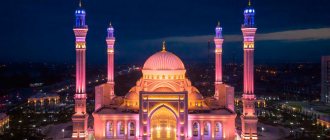At the center of the drug addict’s value system is the psychoactive substance, the source of the highest thrill and severe suffering. Life is cyclical: use, withdrawal, search for resources, use. The goal of drug addiction rehabilitation is to break this vicious circle and teach the addict live in the real world.
Rehabilitation of drug addicts is a process in which, under the guidance of narcologists and psychotherapists, a person acquires personal maturity. He learns to make decisions, be responsible for his actions and get true pleasure from freedom and the ability to control his life , which is stronger than any drug high.
Our rehabilitation centers
Feedback from program participants
How is drug rehabilitation carried out in our center?
Rehabilitation of drug addicts in Moscow at the Center for Healthy Youth begins with the elimination of withdrawal symptoms and the correction of somatic diseases .
A newly arrived patient is examined by a narcologist, a therapist and specialized specialists. Detoxification is carried out using modern drug regimens and instrumental methods. The main stage is the elimination of psychological dependence; without this, full rehabilitation of drug addicts is impossible. During individual work with a psychotherapist and group sessions, the causes of addictive behavior are identified, complexes and internal conflicts are eliminated.
Rehabilitation from drug addiction ends with the patient’s complete social adaptation. He learns to effectively build relationships with people around him.
We recommend that relatives undergo codependency therapy. After leaving the drug rehabilitation center, a person should enter a healthy atmosphere - in this case, the risk of relapse is minimal.
The whole truth about treatment
“Alcoholism and drug addiction - the whole truth about treatment”
"Treatment of drug addiction and alcoholism"
Many people think that free rehabilitation is nothing more than a myth or a “trick”. There is a strong opinion that any more or less high-quality treatment of alcoholism or drug addiction costs money, and “for free” you can only do heavy occupational therapy in a center with a religious bias. Perhaps this was once true. But the fact is that the rehabilitation market has changed a lot recently, and today there are really good free or budget centers where no one forces you to study religion or engage in occupational therapy from morning to night, and participants undergo the same program as addicts from more prestigious centers.
- Doesn't want to be treated ?
- Motivation for treatment
It is always easier for qualified specialists to find an approach to an addicted person. Our staff provides motivation and intervention assistance 24/7. We deliver the patient directly to the social adaptation center. 8
FAR EASTERN FEDERAL DISTRICT
Vladivostok diocese
MPRO parish of the Church of the Intercession of the Mother of God
Year of start: 2004; the rehabilitation program is designed for 60 people at a time; Primary counseling, the main stage of rehabilitation, resocialization, and work with relatives of drug addicts are carried out.
Head: Archpriest Alexander Talko
Contacts: Tel.
Tel.
Website: www.pokrovadv.ru
What is free rehabilitation?
Firstly, this is exactly the same therapeutic process as in other centers. Group therapy or individual therapy with a psychologist is the basis of addiction treatment, therefore, despite all other conditions, the psychocorrectional factor is carefully preserved in free rehabilitation centers. After all, without this it is simply impossible to get rid of alcohol or drug addiction.
Living conditions in free centers may differ from conditions in more representative ones. They are not “terrible”, maybe less luxurious, but definitely no less comfortable: in the center there is always a group room, a room for personal consultations, a kitchen, a dining room and personal rooms for the guys. Also, in any center, all residents are provided with three meals a day, which includes breakfast, lunch and dinner. And the free centers have all the conditions to fully undergo rehabilitation from any type of addiction: for many, this is enough to never use again after completing it.
The main difference between free centers is that rehabilitation participants themselves determine the conditions of their living: not being able to pay for accommodation, food and the work of a specialist themselves, they regularly attend occupational therapy, thus paying for their stay in the center. You don’t need to pay money there, but you need to work. This is not slave labor for 12 hours, but daily shifts in which rehabilitation workers change with each other in order to devote more time to the therapeutic process. In this way, you cannot earn money for a “luxury residence,” but you can provide yourself with comfortable accommodation if you have never had money before. In addition, occupational therapy is not called that for nothing, and it accustoms many addicts to work: after this, it is easier for them to find a job after leaving the rehabilitation center.
Thus, free rehabilitation is rehabilitation for which the participant in the rehabilitation process fully pays for his or her accommodation in the center, regularly attending occupational therapy. Even in comparison with classical rehabilitation centers for addicts, this technique has proven itself well: despite the fact that some time is devoted to occupational therapy, the classical rehabilitation process does not suffer from this and the effectiveness of the program remains the same. This means that even if you or your loved one cannot pay for rehab, you can always try a free rehab center and it can help!
Anonymous 24 hours a day Activity is licensed Patient accompaniment
Full range of narcology services:
- tests
- drug testing
- detox
- encoding
- psychiatry
- binder
- withdrawal symptoms
8+7
For more than ten years, the Russian Orthodox Church has been providing rehabilitation for drug addicts. Shepherds had to deal en masse with this category of people in the mid-90s. For confessors, this was a new phenomenon, in relation to which it was necessary to develop a special approach. Drug addiction is one of the main components of the non-church youth subculture that was born in the second half of the 20th century, initially hostile to the church value system and the Christian worldview. The ideological guidelines of the ruling Communist Party and the “Iron Curtain” for a long time did not allow this subculture to occupy the territory of our country, but with the coming of new people to full power in the state in the early 90s, the youth were doomed to enslave this, extremely ruthless towards the young people captured by it , subculture. The capitulation was swift and almost complete: the enslaver had long been expected and was greeted with jubilation as a liberator. One of the bitterest fruits of this war, which was lost without a fight, was the emergence of millions of young people destroyed by drugs, some of whom, in search of a way out, began to look into the church.The confessors' first experiences of communicating with them were, for the most part, not particularly successful. There are known cases of a positive outcome of the meeting, but among the masses, mutual misunderstanding and rejection were mutual. At first it was not easy to guess that it would be more productive to view the meeting between a priest and a drug addict not as a meeting of two foreigners speaking a related language, but as a meeting of two aliens. It can be said, with some exaggeration, that in a spiritual sense, during the period of their communication, there was a contact between two anti-worlds. Despite the initial failures, many church ministers did not lose their desire to find ways to effectively help drug addicts, and they gradually accumulated positive experience along this path. Those who managed to find the right approach continued to develop rehabilitation more and more successfully, while the rest of the clergy, after a number of unsuccessful attempts, withdrew. The success rate for those who seriously and for a long time took up the rehabilitation of drug addicts seemed implausibly high: from 50 to 70% of remission (some even claimed higher results, but it is more prudent to mention only what you have seen, and not what you have seen) which I was lucky enough to only hear about). Russian medicine is more modest in assessing the results of its own efforts to help drug addicts: no more than 5% go into remission. Are church ministers exaggerating their performance? Is it possible to treat their testimony as trustworthy? We will try to answer this question later.
At present, it is already possible to draw some preliminary results and begin to analyze successful rehabilitation programs. Actually, those who are involved in this matter have been exchanging experiences for several years now. But it is still premature to declare that they managed to achieve a unity of opinions on all fundamentally important issues that arose. Moreover, some Orthodox rehabilitation centers tend to consider only their own approach to be correct and effective; other approaches are considered a priori as erroneous, and therefore do not want to discuss them at all. Nevertheless, in general, the dialogue continues and along with the growth of understanding of the problem, the degree of mutual understanding also increases. One can hope that a common position will soon be developed on the entire range of rehabilitation issues, and after that it will be possible to share verified experience with those who are forced to deal with the problem of helping drug addicts, but do not yet know how to solve it.
Next, we will try to very briefly outline the answers to the following questions:
· What are the features of church rehabilitation?
· What is the main difficulty of church drug rehabilitation?
· Which church organizations took an active part in the church rehabilitation of drug addicts, what were the strengths and weaknesses of each of them?
· Which rehabilitation scheme seems to be the most advantageous?
What is the peculiarity of church assistance for drug addicts, and how does it differ from secular rehabilitation? In order to get an answer to this question, let’s see what mandatory elements, not used by medicine and non-religious rehabilitation centers, does rehabilitation of drug addicts in a parish or at a monastery include? Its main and obligatory elements are labor obediences, church and cell (home) prayer, fasting, individual spiritual guidance of the rehabilitator and his participation in the sacraments. Within the framework of this article, it is possible to say just a few words about each of these elements.
Obedience is not only, and not so much, the acquisition by a former drug addict of the skill of working, which most of them do not have, but, first of all, the gradual assimilation of a different view of work. That work is the best way to honestly get money is clear to everyone. But, acquiring a church view of the world, a person also discovers that work is, firstly, a painful penance imposed on all descendants of Adam, especially useful for those who in their lives, like drug addicts, actively served sin, and secondly, joyful direct service to God and neighbors, thirdly, the initial step on the ladder of human spiritual development. With proper understanding, work acquires a high spiritual meaning.
“Prayer is endless creativity, higher than any other art or science. Through prayer we enter into communion with the Beginningless Being. Prayer is an act of the highest wisdom, all-transcending beauty and dignity. ...Through prayer, our reborn spirit begins to marvel at the great mystery of Existence.” (Archim. Sophrony (Sakharov) “On Prayer”). Contact with prayer, exercise in prayer produces a decisive change in a person, in his sense of self, in his self-awareness, in his perception of the entire world around him. Even timid, constrained, inept communication with God changes all the prospects of a person’s life. Just as a mother tremblingly catches the first babble of her baby, so God the Father listens to every word of a sinner seeking reconciliation. Prayer is certainly part of the life of a rehabilitator at the parish.
Fasting scares only those who have never fasted in their lives, but those who limited themselves in nutrition according to church regulations, in return unexpectedly acquired a greater fullness of life. Fasting is one of the main tools for spiritual improvement. By limiting oneself in food, as well as by eating food with a prayer of thanksgiving, a person nourishes his soul and builds a blessed relationship with God. Keeping fasts is usually easy for rehabilitators, since during this period of their lives everyone around them is fasting; a correct understanding of fasting is more difficult, but if it comes, then fasting will accompany them for the rest of their lives.
During the period of life at the temple, a person has a happy opportunity to entrust himself to the guidance of a confessor, with whom he sometimes develops such deep trusting relationships that the person has never had with anyone before. It doesn’t always work out this way, not even especially often, but even the sympathetic and compassionate attention of a person who has some experience of spiritual life, who can give saving advice and answer a difficult life question, is highly valued by people. If the confessor manages to win over the rehabilitator, if he gives the confessor access to his soul and is convinced of the experience of the spiritual leader, then the latter gets the opportunity to successfully treat the soul of the ward from any passion, including drug addiction. Orthodox tradition preserves a wealth of experience in the struggle with passions.
“The essence of religion is sacraments” (A.F. Losev “Dialectics of Myth”). The main privilege of every church member is the opportunity to participate in the sacraments. The drug addict is not deprived of this opportunity. A person gains access to other sacraments through the sacrament of repentance, and if he has not previously been baptized, then through the sacrament of baptism. The central sacrament is the Eucharist. After all possible preparations, former drug addicts are also allowed to visit her on a general basis. Through the sacraments, God prepares people for eternal life, while simultaneously healing them from injuries caused by sin. Need I state the obvious: there is no wound that the Creator cannot heal.
Let us add to this main list the reading of spiritual literature by former drug addicts, their listening to sermons and conversations on spiritual topics, constant communication with the brethren of the monastery or the servants of the temple, living together with them or living in their immediate neighborhood. Many of the monasteries or parishes involved in rehabilitation can add to this far from complete list.
What happens in the soul of a rehabilitator when he encounters all of the above? Let’s give the floor to one of them: “The biggest discovery is that there is another world - a spiritual one, other interests, another circle of friends. Previously, this was far away and unrealistic. It seemed to me that this was a half-myth. I felt superior to such people, and now I realized how superior they are to me. This was hard for me: changing stereotypes.” Along with a change in stereotypes, a change in their view of the world around them and themselves, as their worldview is radically restructured, these young people have a need to ask the main questions of existence, primarily the question of the meaning and purpose of their own life. “More and more people no longer see the meaning in life. When young people, whose eyes have barely opened to the awareness of the life given to them, fall into despair from seeing the absurdity reigning in the world, then the heart grieves deeply. … So, one of the most important problems becomes the revelation of the true meaning of our phenomenon to the world.” (Archim. Sophrony (Sakharov) “Letters”). Finding the main meanings of life, which occurs during life at the temple, is extremely important for liberation from drug addiction. Let us cite the testimony of the famous psychologist W. Frankl: “If you believe Stanley Krippner, 100 percent of cases of drug addiction are associated with a feeling of loss of meaning: when asked whether everything seems meaningless to them, 100 percent of drug addicts answered in the affirmative. ... And here it is clear why Fraser, who heads a drug rehabilitation center in California and used logotherapy there (with the help of which patients gained meaning - I. M.), managed to achieve a 40 percent cure compared to an average of 11 percent with traditional methods of treatment.” . The time has come to remember the question of trust that was put off for a while and answer it with a counter question. If comprehension of life can increase the rate of remission to 40 percent, then how much more should this percentage increase when labor obedience, prayer, fasting, spiritual guidance and church sacraments are included in the rehabilitation process? The figures on remission given by church rehabilitation centers are trustworthy, and the experience they have accumulated is worth studying.
So, the main figure in Orthodox rehabilitation is the Creator, Provider and Savior of the world. The first and main task for the other participants in the rehabilitation process is to give God the opportunity to intervene sovereignly and powerfully in the situation. What can “weaken” God, become an obstacle to His love, which desires the healing of a young creature from drug addiction? “The power of love is great and victorious, but not completely. There is a certain area in human existence where even love has a limit, where even it does not reach full power. What is it? Freedom". (Archim. Sophrony (Sakharov) “Elder Silouan”). God will fully engage in healing the soul of a suffering person only if the latter always consents to the Savior entering his life. At the same time, it is necessary for a person to wisely build his relationship with God. In the Gospel, examples of saving appeal to Christ are shown by the bleeding woman, the Canaanite woman, the publican, and the prudent thief. Therefore, the second, and no less important task of rehabilitation organizers is to help the drug addict correctly place himself before God. But for any Christian, spiritualists solve the same problem. What then is the peculiarity and complexity of solving this problem for the situation with drug addicts?
It is necessary to clearly understand that in the church fence the drug addict is an alien from the anti-world: from the anti-Christian world. If this is an exaggeration, it is a very minor one. He is separated from the church flock by a completely different life experience, a different, inverted system of values, a different vision of the world and understanding of the laws prevailing in society, other goals and aspirations lead him through life. In the spiritual space of the youth subculture, he absorbed a different “dogmatics”, somewhere latent, and somewhere openly anti-Christian. Despite their young years, many of them have already achieved perfection in the ability to lie, have acquired sophisticated debauchery, and crime has become an inseparable companion of their lives. They are characterized by an indifferent attitude towards the suffering of their closest and dearest people, but they will instantly detect sympathy for themselves in their neighbors and try to “cash out” this good disposition. And the fact that they came to church should not be misleading: it was not the search for God that brought them here, nor repentance for the many crimes they had committed. For most of them, the desire to go to church is not a desire “to”, it is an escape “from”. An escape from the totality of chaos and destruction that the addict rapidly spreads around him, and from which the first one suffers. Escape from death, which has already opened the hunting season for him (the life expectancy of a drug addict from the beginning of drug addiction to the tragic outcome is on average only 5 - 7 years). When an adequate understanding of the reality regarding drug addicts comes, then attempts to quickly explain to the drug addict in words and with the help of a set of several life-saving tips to get him out of trouble look extremely naive. There is no simple universal algorithm for establishing productive communication with a person enslaved to drugs. “We all speak different languages.” Why on different ones? Yes, because behind our every word our whole life, all our experience is hidden.” (Archim. Sophrony (Sakharov) “Letters”).
But there is also no basis for accepting extremely pessimistic conclusions. The drug addict who came for help finally realized that he was in trouble and was intensely looking for a way out. He is ready to listen, although he is not yet able to understand. He agrees with the thesis that something needs to be radically changed, although he does not know for certain what exactly, and what efforts and sacrifices it may require from him. He gives little credit to the servant of God because he has no other choice. All this creates an opportunity for a meeting that should continue. The first sacrifice that a drug addict must make in order to gain freedom from the power of the drug over himself is to agree to leave his environment, temporarily stop communicating with family and friends, and settle in an Orthodox rehabilitation center, agreeing to abide by the rules adopted there. Many people agree to “take a risk.” Based on the small experience that the rehabilitator will acquire in contact with the new church world for him (while minimizing the influence of the previous one during the same period), it will be possible to try to decide with him regarding some vital things, to constructively “talk through” his problem, thanks emerging mutual understanding, to indicate the path of religious exodus from drug slavery. Experience shows that this approach brings good results. After some time, when working with him in this direction, the patient opens up the possibility of a meaningful attitude towards each of the components of church rehabilitation, he begins to guess what kind of reassessment of values is being proposed to him. Does everyone agree to change their life guidelines? Of course not. Many people have no interest in religious life, but at least they get an idea of what it is about. Perhaps they will be called by the Lord later.
Who in the Orthodox Church is involved in the rehabilitation of drug-addicted youth? Each Orthodox rehabilitation center can be classified into one of three groups:
· secular centers - public organizations created by Orthodox laity
parishes and monasteries involved in rehabilitation
· rehabilitation centers, united among themselves to implement a systematic approach: the initial stage of rehabilitation takes place in a secular center, then patients are admitted to parishes or monasteries.
Let us briefly note the features of each of the groups and outline their strengths and weaknesses.
Secular rehabilitation centers. Any of them was created by a group of Orthodox enthusiasts who together form the core of the organization. A team of specialists gathers around them - professionals, among whom may be doctors, narcologists, psychologists, social workers, specialists in the organization of the labor process and the necessary service personnel. Such centers are located both in the city and outside the cities - the latter is obviously preferable. The center’s employees go to work on a regular schedule, patients enter their lives only during the rehabilitation process, and drug addicts have no contact with the employees’ families. All life in these organizations is built around patients, employees constantly look after them, especially since it is not safe to leave such a number of young people who have recently left drug addiction (from 10 to 30 people) without careful control. The rehabilitation process here lasts 2 – 3 months. Both boys and girls are accepted for rehabilitation at the same time, although some organizations prefer separate rehabilitation. At some secular centers, chapels or even temples have been built, in which the priest serving at the center periodically serves.
What are the pros and cons of rehabilitation in secular centers? The advantages include the considerable capacity of such centers and the ability to devote the required amount of time to each rehabilitator. The staff’s ability to communicate with patients at a low spiritual and cultural level accessible to drug addicts, the good organization of medical control, and the possibility of cultural, moral and religious education for a large group of young people deserve a positive assessment. The disadvantages include the usually weak church affiliation of a significant part of the employees, who therefore cannot form among rehabilitators a clear idea of religious life, insufficient participation, and sometimes the absence of an Orthodox priest-confessor in the rehabilitation process, the rare performance of church sacraments on the territory of the rehabilitation center, or their complete absence.
Monasteries and parishes. In the activities of these primary church structures, rehabilitation does not occupy a central place at all, but is only one of the types of their social activities. But on the other hand, patients live together or in close proximity with the servants of the temple or with the brethren of the monastery, observe closely their entire life and participate in it. The optimal rehabilitation time here is considered to be from 6 to 12 months, sometimes even longer. Orthodox communities prefer separate rehabilitation for boys and girls: this is customary in parishes, and even more so in monasteries. Men's monasteries accept boys, women's monasteries accept girls. At monasteries, patients sometimes live together with workers (workers), but generally they are preferred to be housed separately from workers and in the immediate vicinity of the monastery. In parishes, rehabilitators live together with the church servants; in this case, prudence requires that the total number of rehabilitators should not significantly exceed the number of permanent residents of the parish. Those who, after a long and successful rehabilitation, have chosen to live in the temple should be considered as ministers, and not as “eternal” patients.
What are the pros and cons of rehabilitation in parishes and monasteries. Obvious advantages include the opportunity for patients to fully participate in divine services and sacraments, and the opportunity to benefit from the spiritual care of an experienced confessor. No less important for rehabilitators is contact with the everyday life of a large community of church people, the entire way of which sharply contrasts with what they observed in their former life. Through this, the possibility of intensive experimental development of this different existence in the world opens up for them. The disadvantages include the weakening of control over rehabilitators, the need for them to demonstrate their own activity in order to advance in religious life, for which many of them are not at all ready. It should be noted that the capacity of parishes and monasteries is still low, since the rehabilitation period is significant, and the number of patients simultaneously living at the monastery, and especially at the parish, is not large. An unjustified increase in the number of rehabilitators immediately sharply reduces their ability to achieve stable remission, since with large overcrowding and insufficient control, drug-addicted patients, instead of striving to enter church life, rush to reproduce the realities of the youth subculture at church. Things may take such a turn that the parish will be forced to temporarily abandon its activities of saving drug addicts and turn to saving its parish life. In the matter of rehabilitation, one must soberly assess one’s strengths and capabilities. But the biggest difficulty lies elsewhere. If a drug addict comes from the world straight to a parish or monastery, then he cannot understand religious life, cannot enter it correctly, and the servants of God do not have enough time or the necessary experience to help him take the first right steps on the path to spiritual life. Everything that a person does not understand is difficult for him. The result is mutual rejection and resentment. It happens that a drug addict ends his stay at a church with such an act, after which the ministers are already afraid to shelter someone else like him. But everything can go quite well if there are patients in the parish who have successfully completed rehabilitation: they will help the newcomer make the transition from one world to another with advice and example. It is impossible not to notice that a vicious circle is forming: in order to begin effective rehabilitation of drug addicts at the temple, it is necessary that it already has successful rehabilitators. This circle can be broken through by the special assistance of God’s grace. You can try to get around this complexity in another way. The author knows of the parish rector who initially agreed to continue the rehabilitation of six “graduates” of a secular Orthodox rehabilitation center, and then, using their help, began to accept patients directly from the world. Thus, he established good continuity in this activity, which he continues to this day.
It remains to consider a systematic approach to rehabilitation, when its initial stage takes place in a secular center, then “graduates” who wish to do so are accepted into parishes or monasteries. When the first stage ends, the staff of the secular center recommend that those who have awakened a genuine desire for religious life continue to become church members in the parish community or in the brotherhood of the monastery. Those whose initial interest in the church has faded during secular rehabilitation are being prepared to return to the world. One secular Orthodox center can interact simultaneously with several monasteries and parishes, since it has a greater capacity. This systematic approach makes it possible to almost eliminate the weaknesses of both previously discussed approaches to rehabilitation. The employees of the secular organization involved in the distribution of “graduates” are well aware of the characteristics of each church structure included in the system, and have also taken a closer look at the characteristics of each of their pupils, therefore they try to direct each of them to the most suitable place for a given patient. In some cases, if the first distribution is not successful, it is possible to agree to move the rehabilitator to another parish or monastery included in the network. The author of the article had the opportunity to get involved in rehabilitation precisely according to this scheme from the very beginning. It seems that such a systematic approach has significant advantages over the other two, since it allows us to further strengthen their strengths and together neutralize their weaknesses.
This concludes our brief overview of the features of Orthodox rehabilitation for drug addicts. The Church should not refuse help to those who ask for its assistance in liberation from drug captivity, and does not have the right to impose its help on those who are against its intervention. The experience accumulated by Orthodox rehabilitation centers, both secular and ecclesiastical, should be analyzed and brought to the attention of church ministers faced with this problem. We will leave the last word in this article to the patient who began his rehabilitation at the “Melnitsa” - a rehabilitation center near St. Petersburg, and continues at one of the Orthodox parishes:
“The Mill is a vector. The beginnings are being laid. There is a break from drugs. The turning point occurs in these three months, but this is not enough. There they only show the direction, but the arrival can give strength, because you fully understand everything only at the arrival. The “Mill” and the parish have different functions. The attitude towards the spiritual world needs to be changed. All the time I was an unbeliever, or rather like everyone else, that is, I believed that there was some kind of power. Now for me, spiritual peace means going to church, trying to keep the commandments, and at least sinning as little as possible. You need to start small and gradually load yourself up. The circle of acquaintances and lifestyle will change, and everything follows from this. I'm not ready now. I need an inner core. He’s not there yet, but I hope and am working for him to appear, which is why I’m here in the parish.”
| Next > |
For whom are free rehabilitation centers open?
First of all, such centers are aimed at those who may not be able to fully pay for a rehabilitation course or cannot do it at all. Therefore, often: in the group there may be people who pay the minimum payment for their rehabilitation, and in order to cover the costs, they “finish their jobs” in occupational therapy, while others do not pay at all, but are more often forced to attend work. In any case, everyone works for their recovery as best they can, paying for comfortable accommodation, healthy food, and the work of psychologists and doctors.
Free rehabilitation is an excellent solution for those who “want to, but cannot.” It is for these people that rehabilitation centers exist, since they also require a high level of personal motivation for recovery from the participant. Not everyone will be able to work to pay for their rehabilitation, while regularly working through their personal psychological problems with a specialist and in groups.
General provisions of rehabilitation programs
Alcoholism, drug addiction and other types of pathological addictions are the first signs characterizing the spiritual and moral decline of society. An addicted person’s worldview changes; family and work are no longer accepted by such people as traditional foundations. Sin and the cult of drugs are becoming the norm.
The “Fundamentals of the Social Concept of the Russian Orthodox Church” notes that, losing spiritual support, a person puts in its place the ideology of consumerism, easily falling into the trap of drug and alcohol addiction.
The Church extends its hand to addicts, offering to overcome their vice. Rehabilitation programs provide psychological support, laying a spiritual core for both drug addicts and their close circle.
Modern life has long shown that medicine can well support the exhausted body of a drug addict, but it is not able to change the most important thing - the deep spiritual wounds that underlie the mental crisis of the sufferer.
Orthodox programs are based on knowledge of Christian psychology, medicine, examples of the life of the holy fathers and spiritual experience of a sober perception of life. Today, in comparison with medical programs and self-help groups, it is rehabilitation centers at churches and monasteries that give the most fruitful results. Another component of Orthodox centers is the fusion of Divine help with human will.
How to get to rehabilitation for free?
Any application for treatment of drug addiction or alcoholism requires individual consideration by specialists, especially if the person is unable to pay for his treatment. After consultation with the addict or his relative, our specialists will be able to tell which center and which program is best in this case and will give the maximum result. So, in order to get into free rehabilitation, you just need to call our hotline and report it, you will be immediately advised and a suitable free center will be found, where within a few days you can start a new life: without drugs and alcohol.
Spaso-Preobrazhensky Center
Provides rehabilitation for addicts in three main areas: spiritual, psychological-therapeutic and social. There are regular meetings with the clergy, participation in the life of the Church and divine services.
Inpatient rehabilitation.
Address: Stavropol, Shkolny Lane, 12
Telephone
Regional public organization "Rostov without drugs"
Founded in 2007, today it exists under the Rostov-on-Don diocese, Stavropol and Nevinnomyssk diocese.
Rehabilitation methods for drug addicts
Treatment of drug addiction and subsequent rehabilitation of drug addicts are effective with step-by-step therapy.
Only a set of measures consisting of drug treatment, psychological work with the patient and social adaptation leads to positive results.
Effective treatment can be obtained in a specialized closed institution, since drug addicts have minimal ability to self-control. Even if a person has decided to give up drugs, soon after starting treatment he may start looking for them again.
Rehabilitation of drug addicts at the Center for Healthy Youth in Moscow is a stage of treatment that begins after narcotic substances are removed from the human body.
The drug rehabilitation program uses various techniques. The main thing is the patient’s desire to get rid of drug addiction. If there is no desire to stop taking drugs, any therapy will be useless.
How addiction treatment works:
- MOTIVATION Recommendations of a psychologist Visit of a specialist Guarantee of results
- DETOXIFICATION Home visit (in hospital) Cleansing of the body Diagnostics by a psychiatrist
- REHABILITATION Social program Standard program Individual program
- SOCIAL ADAPTATION Employment opportunity Job training Outpatient support
- SUPPORT FOR RELATIVES Self-help groups Webinars (online) Individual consultations
Temperance Society "Sobriety" in the name of the Holy Righteous John of Kronstadt
Founded in 2014 under the department of social service and charity of the Kaliningrad diocese. Confessor – Priest Sergius Vasilevsky.
Outpatient rehabilitation. Inpatient is carried out by the community of Saint Righteous John the Russian
for the homeless in the village of Kholmogorye, Pravdinsky district. Head - Dubrovin Arthur.
Address: Kaliningrad, st. Dmitry Donskoy, house 23
Telephone
Charitable Foundation "Diakonia"
Two rehabilitation centers and Sologubovka were opened in 1995 and 2012 on the basis of Orthodox parishes. The head of the rehabilitation program is Priest Alexey Zhigalov.
Inpatient rehabilitation.
Main directions: psychotherapeutic and educational methods, the basics of the Orthodox faith, labor obediences on the territory of the centers.
Address: St. Petersburg, Monastyrka River Embankment, building 1, room 248
Telephone
Stages of the drug rehabilitation program
A drug rehabilitation program may include the following stages:
- Psychotherapy . A very important mandatory stage of treatment. Psychologists, working with the patient, pay attention to the development of skills of self-analysis, self-control, strengthening of will, provide an attitude towards active recovery and motivation to return to a full life.
- Occupational therapy . An integral part of rehabilitation treatment, the purpose of which is to restore the functions of the affected organs and the body as a whole, and increase the tone of the body.
- Reflexology . This technique helps with severe forms of physical dependence.
- Relaxation and communication in a team . Patients at the Central Medical Center spend a lot of time in groups, attending cultural events, exhibitions, and playing sports games. Communication with people experiencing a similar situation helps strengthen the desire to return to normal life, and subsequent social rehabilitation of drug addicts is easier.
Drug addiction rehabilitation methods used in combination lead to stable remission , but cannot promise 100% results.
General provisions for rehabilitation
The Orthodox Church believes that drug addiction is the cause of a lack of faith in the Lord. Therefore, every non-profit Orthodox rehabilitation center sets itself the task of educating drug addicted students on the basis of spiritual and cultural values that are familiar to our country. Communication in such centers is structured in the same way as it is structured in a large large family. The head is the priest, whom everyone obeys and who ensures that his orders are carried out. The priest is helped by his wife, mother. She demonstrates obedience and flexibility.
Monastery shelters for drug addicts always have volunteers who serve as models for newly arrived rehabilitators. Volunteers are people who have had a three- or five-year stable remission. Newly arrived people are “younger brothers” whom volunteers try to help with word, deed and example.
Free treatment for drug addiction at monasteries is a useful event, thanks to which many people who have given up drugs develop love for their neighbors, respect for family and friends, and the desire to start a family. Some become believers and deeply repent of their drug addiction. Church-based rehabilitation centers usually offer a 9-month rehabilitation program.
Tools for the rehabilitation process
Life after rehabilitation: adaptation of former drug addicts to life in society
Social rehabilitation of drug addicts is the final stage of treatment, when a former drug addict leaves a specialized institution and returns to life in society. For a person who has just quit taking drugs, this is a difficult step that requires support from loved ones and specialists.
Often a former drug addict is ashamed of his past; communicating with people causes difficulties. In these difficult times, it is worth remembering that there are people who will always support and help with advice.
Our center uses drug rehabilitation methods that have proven to be effective . If you notice strange behavior in a loved one or discover that he is in trouble, immediately contact a specialist. Drug addiction is a disease that cannot be delayed. You can find out prices for treatment by calling the numbers listed on the website.
What to do after rehabilitation?
- Vocational training
This is a complex of educational programs for alcohol and drug addicts with further socialization and employment. More details - Employment
After training, the rehabilitator can remain employed both at the center and in other organizations not related to treatment and rehabilitation. More details
What components does a special rehabilitation program consist of?
The rehabilitation program consists of 4 components. This:
- Correctional and pedagogical component. In this case, it means the work of a specialist with drug addicts to eliminate deficiencies in thinking. This component involves developing responsibility, love for one’s neighbor, hard work, empathy and spirituality in a former drug addict. Thanks to “environmental therapy”, drug addicts move away from harmful behavioral patterns.
- Educational component. Orthodox rehabilitation centers have libraries that contain specific literature. Its task is to broaden the horizons of the rehabilitator, to awaken in him the desire to think creatively. Many books in the library reflect the Orthodox view of drug addiction. The educational component also involves the writing of instructive essays by rehabilitators. Students choose topics independently. The written abstracts are spoken out loud so that the rehabilitator can better understand the material that he described in his abstract.
- Social therapeutic component. This refers to labor obediences that are performed collectively. Young people take care of livestock, wash clothes, cook food and clean the area. In such an environment, the rehabilitator recovers faster. Work is not an end in itself. Rehabilitation workers are offered work so that they remember the useful habit of systematic work and will be able to find employment in the future without problems.
- Spiritual and psychological component. Priests explain to young people that the cult of drug use is a demonic ritual. The clergy are trying to convey to their wards that addiction to drugs is a sin for which after death God will send the soul to hell.
Drug addiction treatment program from the Center for Healthy Youth
The modern drug addiction treatment program at the Center for Healthy Youth is successfully implemented in Moscow, Rostov, Krasnodar, many other cities of the Russian Federation and foreign countries. Effective treatment of drug addiction patients is the priority and main specialization of this institution.
The proposed program involves two main stages: detoxification and rehabilitation.
At the first stage, toxic substances are completely removed from the patient’s body. Withdrawal syndrome is relieved by advanced biological methods, without causing physical suffering.
A rehabilitation course for drug addiction treatment involves the implementation of psychological techniques that ensure sustainable remission over many years.
The drug addiction treatment program in many clinics is carried out without a rehabilitation period, so the effect of therapy does not last long.
After detoxification, the patient is simply discharged from the clinic, without caring about his psychological state. In most cases, this leads to the return of the old habit on the second day after cleansing the body. Such offers appear every day, but in reality they are wasted money.
High-quality recovery from addiction is possible only through active work with drug addicts at the rehabilitation stage . This is complex work, which is carried out by high professionals with extensive experience.
- You can't convince me to get treatment ?
- We will help you with motivation for treatment. As a rule, it is difficult for loved ones to persuade or force an addict to undergo treatment. World experts have developed EFFECTIVE motivation schemes, using which you can lead an addict to the decision to seek help. 8
Volunteer organizations
Treatment in the clinic is based primarily on social and psychological aspects. It takes place in two stages:
- Reducing the role of alcohol in life, motivation to give it up.
- Formation of an effective system of values and beliefs.
Address: Moscow region, Ramensky district, Ilyinsky village, st. Oktyabrskaya, telephones,
Rehabilitation center for drug addicts and alcoholics “Vozrozhdenie”
The center operates on the basis of the Charitable Foundation Emergency Support Center “Vozrozhdenie”. It is alarming that the clinic does not use a single medicinal method of treatment. Its basis is the spiritual change of a person. In addition, addicts are restored to work skills and taught some simple professions.
Address: Kaluga region, Dzerzhinsky district, Kozhukhovo village, telephones,
"New life"
The center provides completely free social rehabilitation for alcoholics and drug addicts. It was created in 1995 and exists with money from philanthropists. According to the clinic’s own data, 59.1% of those treated do not return to addiction.
The program includes three stages:
- anonymous consultations with the aim of motivating people to take a rehabilitation course and quit using drugs and alcohol;
- 12 months of rehabilitation and 6 months of internship in a hospital setting in the Kingisepp district of the Leningrad region
- 4 months of adaptation in St. Petersburg.
Address: St. Petersburg, Udelnaya metro station, st. Dresdenskaya 5, entrance from the yard, telephone
Voluntary recovery community "Civic Challenge"
The institution provides assistance to patients in Moscow and the region. The main emphasis in treatment is not only on cleansing the body, but also on overcoming cravings for alcohol, as well as restoring physical strength and moral character.
Address: Moscow, Fergana proezd, 7, bldg. 5, telephones: 8 (800) 100-89-83,,
Features of drug addiction treatment in our program
The specialists of the Youth Health Center do everything possible to ensure that the patient gains confidence in his abilities and discovers new guidelines that will help him return to normal society. The clinic successfully implements the following methods of drug addiction treatment:
- spiritual development of personality;
- equal to equal;
- therapeutic communities;
- 12 steps.
The main emphasis is on the 12 step program, which involves going through three basic stages.
- drug treatment
- rehabilitation
- return of the patient to society ( resocialization )
Each stage of drug addiction treatment has its own characteristics and takes into account the individual characteristics of the patient. The clinic is ready to take on the most complex cases of drug addiction.
New patients upon admission are examined by several highly specialized specialists, including a therapist and a narcologist. The rehabilitation stage begins immediately after withdrawal symptoms are relieved.
The psychotherapist works individually with each patient. At the same time, group classes are scheduled at the same time, in which the psychological causes of addiction are quickly identified. At this stage, a specialist helps eliminate complexes and resolve internal conflicts.
Advantages of drug addiction treatment in our center
All stages of drug addiction treatment are carried out under the full supervision of highly qualified specialists. Other advantages of the clinic include the implementation of a resocialization , which involves a smooth return of patients to a normal environment.
This one goes on to last from six months or more. To implement this stage, patients are placed in apartments that are located next to the rehabilitation center.
Program participants are helped to learn a new profession. Girls are invited to try themselves as a hair stylist or manicure/pedicure specialist. In addition, patients can master the art of photography, web design and other specialties.
Statistics of those who applied to CZM from 2004 to 2021:
- 6961 people total number
- 754 people are currently undergoing the program
- 2240 people in total are in remission
- 297 people were formed and married couples were restored
- 215 children born










